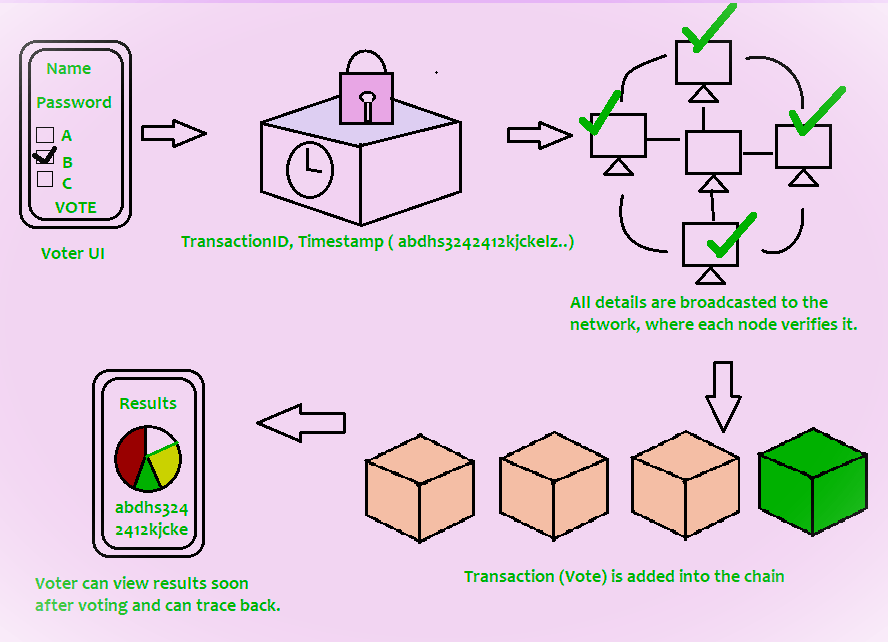Decentralized Voting System using Blockchain
In the era of Industry 4.0, Blockchain is a technology that is fast gaining traction. It is widely utilized in supply chain management systems, healthcare, payments, business, IoT, voting systems, & other areas because of its high security and transparency features.
Why are we in need of it?
Current voting systems, such as ballot box voting or electronic voting, are vulnerable to a variety of security threats, including DDoS attacks, polling booth capturing, vote alteration and manipulation, malware attacks, and more. They also consume a significant amount of paper, human resources, and time. Existing systems become distrustful as a result of this.
The following are some of the drawbacks:
- During elections, there are long lines.
- Security Breach of security, such as data breaches and vote manipulation.
- There is a lot of paperwork required, which is both environmentally friendly and time-consuming.
- Access to polling booths is difficult for voters with disabilities.
- The cost of elections is very expensive.
Solution
The voting process may be made more safe, transparent, immutable, and trustworthy by utilizing Blockchain technology. How? Let's have a look at an example.
Assume you are an eligible voter who goes to the polls & votes using an electronic voting machine (EVM) (Electronic Voting Machine). But, since it's a circuit, & if the microchip is tampered with, you may never know if your vote went to the person for whom you voted or was transferred to another candidate's account.
Because there is no way to reverse your vote, if you use Blockchain, it keeps everything as a transaction, as detailed further below, and so provides you with a receipt of your vote (in the form of a transaction ID), which you can use to guarantee that your vote was tallied safely.
Assume a digital voting system (website/app) has been developed to digitise the process, and all sensitive data is housed on a single admin server/machine; if someone tries to hack it or snoop on it, he or she may change the number of votes cast for each candidate from 2 to 22! You may never realise that a hacker has installed malware or used clickjacking to steal or invalidate your vote, or that a hacker has just attacked the central server.
If the system is integrated with Blockchain, a particular attribute known as immutability safeguards the system against this. Take a look at SQL, PHP, or any of the other standard database systems. You may add, change, or remove votes. However, you can only add data to a Blockchain, not change or delete it. As a result, when you input anything, it stays there indefinitely and no one can change it, hence the name "immutable ledger."
However, putting together a Blockchain system isn't enough. It should be decentralized, so that if one server goes down or anything happens on one node, other nodes can continue to operate without having to wait for the affected node to recover.
The following is the list of its benefits:
You may vote at any time and from any location (unless during pandemics like COVID-19, when it is physically impossible to hold elections) Secure, Immutable, Faster &Transparent.
Let's look at the procedure in detail.
It's usually more fun to learn new concepts when they're visually explained. As a result, the graphic below depicts how Blockchain voting works.
In order to vote, the voter must submit his or her credentials, as shown in the diagram above. After then, all of the data is encrypted and saved as a transaction. This transaction is then broadcast to all nodes in the network, who then verify it. If the transaction is approved by the network, it is put in a block and added to the chain. It's worth noting that once a block is put to the chain, it can't be modified. Users may now view outcomes and, if desired, track transactions back in time.
Because present voting methods do not meet the security demands of today's generation, a system that integrates security, convenience, and confidence into the voting process is required. As a result, voting systems employ Blockchain technology to provide an extra degree of security, enable individuals to vote at any time and from any location, and make the voting process more cost-effective and time-saving.
